Homemade Cultured Buttermilk is going to be a game changer for you. It’s literally as easy as mixing two things in a jar.
And whoa are you going to love having all that fresh homemade cultured buttermilk around. Read or scroll through to the end for great ideas on how to use up your real buttermilk.
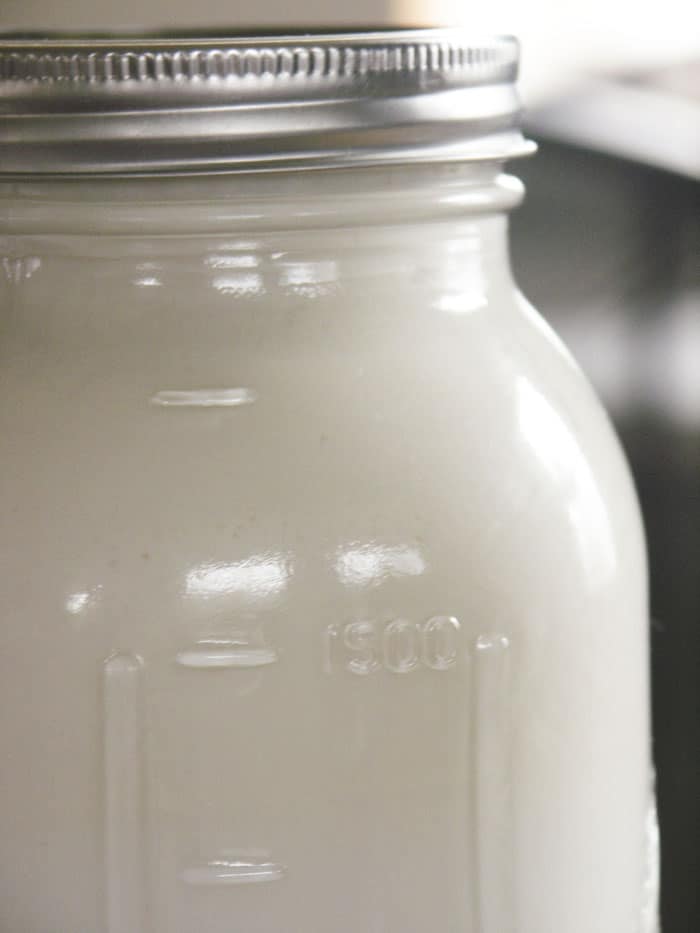
I use a lot of homemade buttermilk. And by ‘a lot’ I mean a ton.
Many of my baked goods contain buttermilk. Much of my salad dressing uses buttermilk.
And my beloved, The Evil Genius? He drinks buttermilk.
Now before any of you out there yawp with a resounding, “EW!” let me just mention that millions of Southerners and displaced Southerners are right now saying, “Mmmmmmmm! A nice tall glass of buttermilk with salt and pepper sounds mighty fine right now.”
A reminder: never yuck another person’s yum. Unless we’re talking durian, then all bets are off… (You may want to read about my family vs. Durian.)
We go through a lot of the stuff. And I may have mentioned that I live in the middle of nowhere in Amish country before (or a million times before, but who’s counting?) so frequent last minute trips to the store are not convenient.
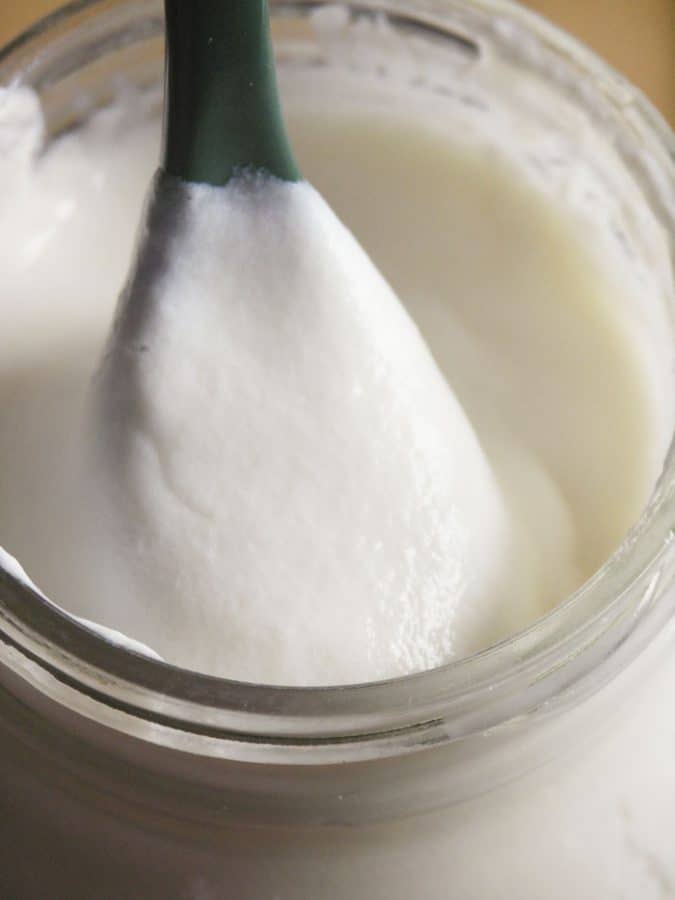
How to Make Real Buttermilk
There are probably quite a few of you out there saying, “Oh please. All you have to do is add a little vinegar or lemon juice to milk and you get the same thing. Why buy buttermilk?”
See? I just knew someone out there was saying it. Not so fast! It’s not the same thing. To prove my point, I have to talk science for a moment.
While the acidified milk might give you the same tang of buttermilk, it lacks woefully in the texture and viscosity department.
Buttermilk is used in recipes for several important reasons. First, it is acidic, so it helps invigorate leavening agents -such as baking powder, baking soda and yeast- when added to baked goods.
The acid also helps combat discoloration in baked goods and promotes deep, beautiful browning. Buttermilk contains natural emulsifiers; this improves texture and aroma, and extends shelf life after baking.
The acidity of your homemade cultured buttermilk makes it a wonderful addition to marinades for chicken and pork. The acid helps tenderize the meat and gives it a tangy flavor.
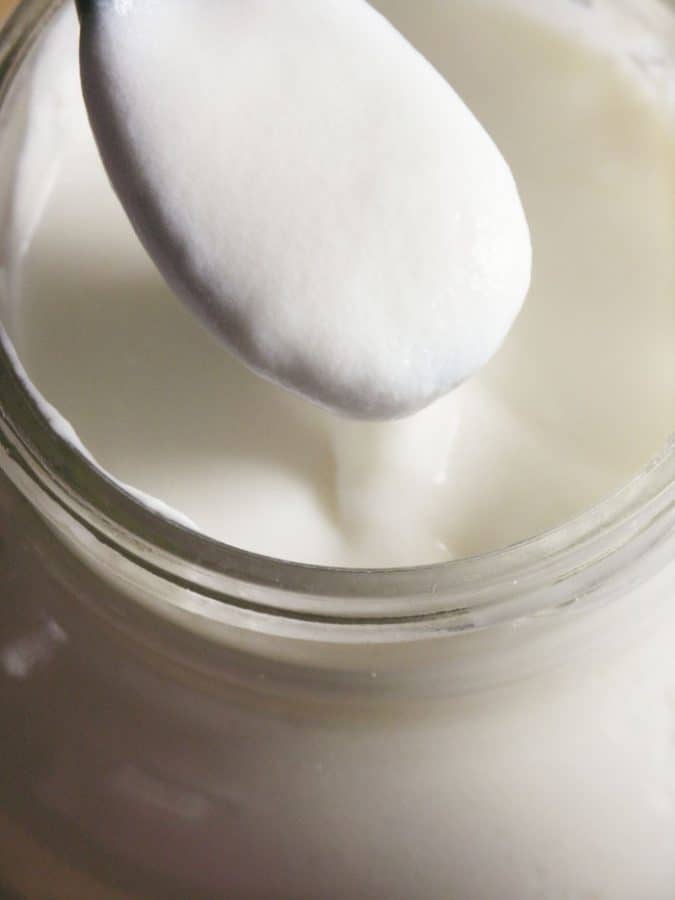
Cultured Buttermilk
You know the ‘cultured’ part of cultured buttermilk? It’s good for you.
It contains many active cultures similar to those found in yogurt. Most of the cultures generally found in buttermilk are form the Lactococcus Lactis family and many of their subspecies.
Those cultures are what make homemade cultured buttermilk so thick and creamy. And what? Good for you!
Now that you know more than you probably ever wanted to know about buttermilk let’s get onto the ‘Why make my own?’ thing. Because you can.
Seriously. You need more than that?
Okay. Also make it because it’s dirt cheap, it’s super simple, it’s really fun and you’ll never run out of buttermilk again.
Hang on one second. Someone out there just said, “I never use a whole thing of buttermilk. What do I do with all that buttermilk?” I’m so glad you asked. How about a few of these ideas:
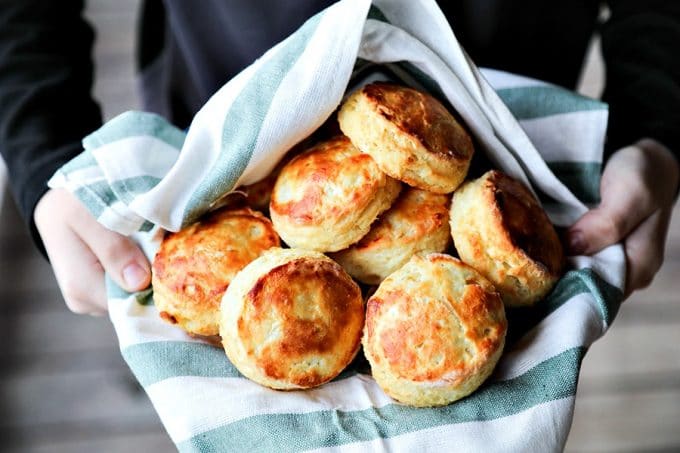
Perfect, flaky, Homemade Buttermilk Biscuit Take it from me, these buttermilk biscuits would do my Arkansas Grandma proud… They’re lofty, flaky, tender, and utterly divine.
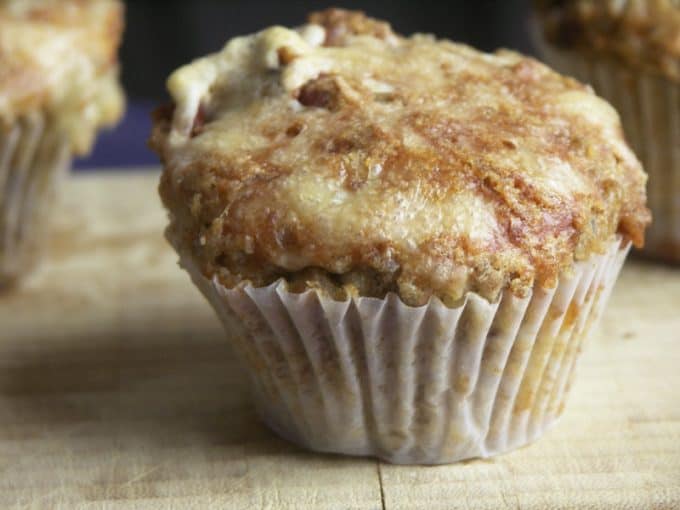
Bacon and Swiss Rye Muffins These are every bit as good as they sound and as easy as pie. No wait! They’re easier than pie. Pie can be hard.
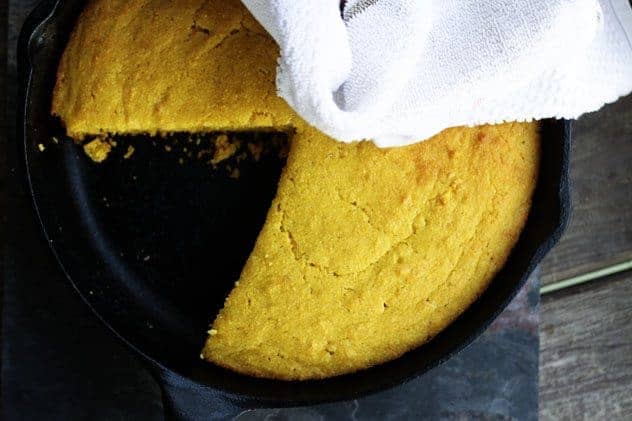
Grandma’s Buttermilk Cornbread This is my Grandma’s buttermilk cornbread recipe and it is ridiculously delicious and the ultimate comfort food.

Buttermilk Cornbread Rounds Based on my Grandma’s Buttermilk Cornbread recipe, these perfectly portioned cornbread rounds fit neatly in the hand and go anywhere cornbread goes, but look cuter doing it! This one’s going a little way back in the FWF archives.
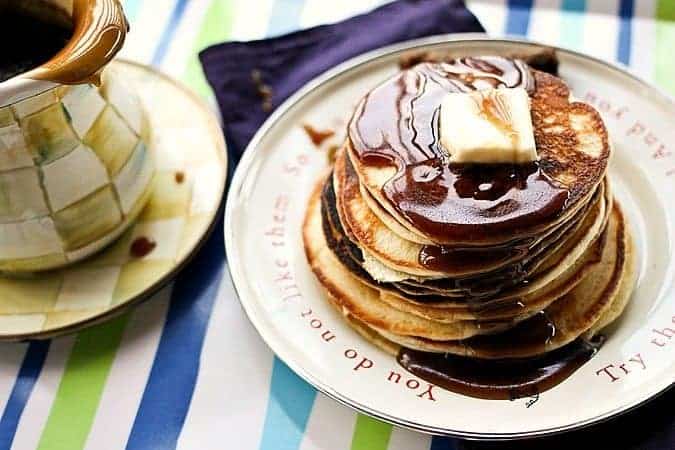
Buttermilk Pancakes Nothing beats beautiful, light, airy buttermilk pancakes smothered in real maple syrup. Nothing. This one’s also reaching way back.

Garam Masala Depression Cake from Val. Nothin’ depressing about THAT cake, I’ll tell you. We’re talking about a decadent, Garam Masala flavored chocolate cake with orange buttercream and toasted coconut.
Oh my. I only take issue with the number of servings Val specified in it. It looks like a one-person cake to me.
I would be remiss if I didn’t mention these others…
- Chocolate Chip Breakfast Cookies (Drop scones)
- Extra Crispy Fried Chicken Fingers (The Evil Genius can cook!)
- Cornbread Salad
Are you good and hungry yet? Excellent. Let’s make some buttermilk. I promise it doesn’t take but two shakes.
Homemade Cultured Buttermilk
Scroll to the bottom for an easy-print version of this recipe!
Ingredients:
- 1/4 to 1/2 cup cultured buttermilk (from the store or home cultured)
- 1 to 2 quarts skim,1%, 2%, or whole milk from the store or raw milk
Also needed:
- 1 clean, dry quart or half gallon jar with a tight fitting two piece lid.
Okay. Ready? If you blink you’ll miss how to do it.
Pour buttermilk (1/4 cup for a quart jar or 1/2 cup for a half gallon jar) into your clean jar. Top off the jar with your plain milk.
Tightly screw lid to the jar and shake vigorously for 1 minute. Place in a warm (but not hot) area out of direct sunlight.
Let it sit there for 12 to 24 hours, until thickened. Refrigerate when thick.
Use within two weeks. If you re-culture this regularly, you can carry on re-culturing indefinitely.
Now here’s a glimpse of my finished product. Note that mine is super thick. I used raw, whole milk to culture my buttermilk. If you use skim, it may end up a little thinner than what you see here.
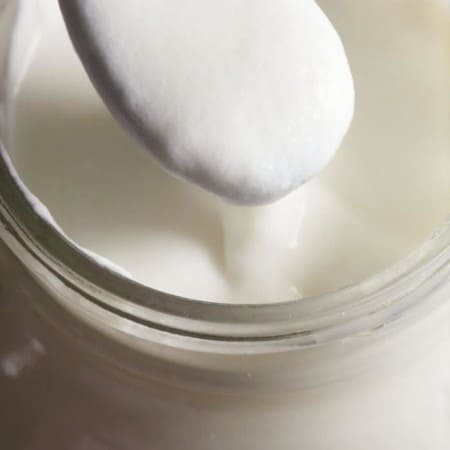
Homemade Cultured Buttermilk
Rate RecipeIngredients
- 1/4 to 1/2 cup cultured buttermilk from the store or home cultured
- 1 to 2 quarts skim 1%, 2%, or whole milk from the store or raw milk
- Also needed:
- 1 clean dry quart or half gallon jar with a tight fitting two piece lid.
Instructions
- Okay. Ready? If you blink you’ll miss how to do it.
- Pour buttermilk (1/4 cup for a quart jar or 1/2 cup for a half gallon jar) into your clean jar. Top off the jar with your plain milk. Tightly screw lid to the jar and shake vigorously for 1 minute. Place in a warm (but not hot) area out of direct sunlight. Let it sit there for 12 to 24 hours, until thickened. Refrigerate when thick. Use within two weeks.
Notes
Nutritional information is an estimate and provided to you as a courtesy. You should calculate the nutritional information with the actual ingredients used in your recipe using your preferred nutrition calculator.
did you make this recipe?
Make sure to tag @foodiewithfam on Instagram and #hashtag it #foodiewithfamily so I can check it out!
This recipe was originally posted March 24, 2010, and was updated with photos, links, and improved notes March 2021.
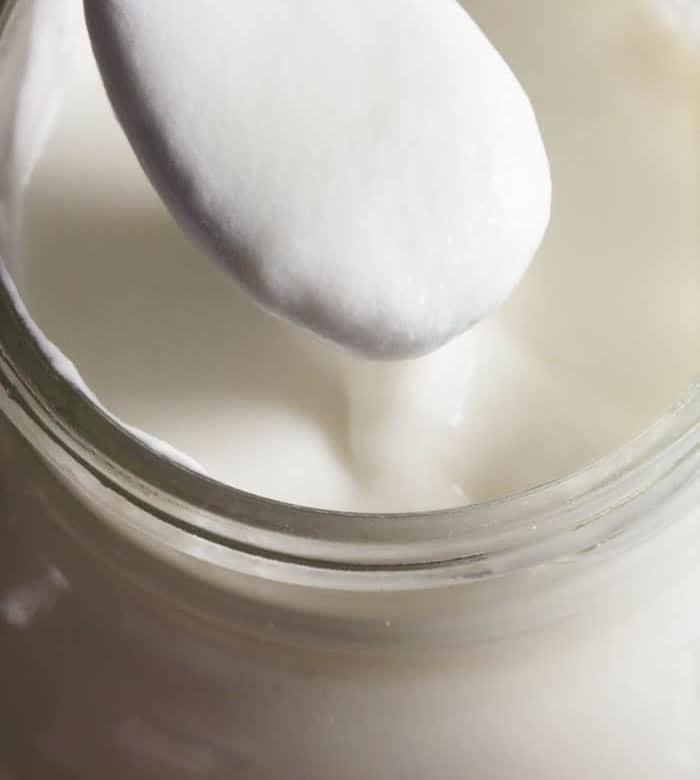



Reader's Thoughts...
KATHY L SMITH says
Well Rebecca, this is AWESOME!!!
We live in a semi rural area and you’d think I could get buttermilk anytime I want… but NO, quite often the store (10 miles away) is out.
I made a mistake by eyeballing the amount left in my bottle and didn’t think it would make a difference that I had more than the 1/2 C of buttermilk to start with. I added enough milk to make the 2 quarts. Wow!! It really thickened up!!
Realizing my mistake, I re-evaluated how much buttermilk I started with… it was less than a cup… really a tad more than 3/4C. After adding 5 more cups of milk it was the correct consistency. Left it on the counter another 2 hours and tasted it. Aside from needing some salt, it was wonderful.
Question… can I add a bit of salt to the entire amount or should I just add it to what I’m drinking? It will be used primarily for cooking, I’m a minority when it comes to drinking it 🙂
~Kathy
Rebecca says
I’m so glad you love it, Kathy! It’s a pretty forgiving process. 🙂 I would advise salting right when you drink it instead of salting the entire batch as the salt could effect the ability to reculture it. Happy Buttermilk Drinking! (My husband also loves to drink it!)
Paul says
Is this the same as the milk remaining after I make my cultured butter?
Rebecca says
Hi Paul- It is not… but it’s probably similar in acidity. It will lack the unctuous thickness of cultured buttermilk, though.
Mtek says
Not DIY or recipe. Buying buttermilk…
Rebecca says
Oh my goodness, Mtek. It certainly IS DIY and a recipe. I’m teaching you how buying it ONCE can allow you to make your own indefinitely. It’s just like yogurt or kombucha- you need that healthy starter before you can make it.
My method is far less expensive that ordering a starter culture from a cheesemaking or wine making supply place, and it’s reliable. I’m sorry you can’t see that, but unless someone has figured out how to magically produce it from thin air, you’re going to need either cultured buttermilk OR a buttermilk culture purchased from somewhere to make this.
Deborah L says
Can you use whole milk greek yogurt in place of buttermilk?
Rebecca says
Hey there, Deborah! That’s a great question. I have not tried it myself because yogurt and buttermilk have different bacterial cultures in them. It might be worth an experiment, though. If you try it, let me know!
Lori says
After 15 hours my buttermilk was more like yogurt consistency, not pour-able. Is it still good? Or did I leave it out too long?
Rebecca says
It’s absolutely fine, Lori! The homemade stuff is pretty robust texturally. 🙂
Allie says
So to make cultured buttermilk, you already need cultured buttermilk? How did people make this before could just go out and get cultured buttermilk?
Rebecca says
Hi Allie- People have been maintaining the cultures used in yogurts, buttermilk, kefir, and other cultured dairy products for thousands of years. There’s proof of it at least as early as the Greek and Roman empires. What they did before that was waste milk or put it in pouches made from animal stomachs. The animal stomachs contained enzymes and bacteria that helped preserve the milk.
You’re certainly welcome to roll the dice and try to gather wild bacteria to colonize your milk or find a calf’s stomach to culture your milk and hope the rogue stuff that makes your milk unpleasant, curdled, or otherwise badly funky stays out of the party. I prefer to make certain the good bacteria are doing the job. This is why I use either a cultured buttermilk that I buy at the store OR a freeze-dried culture starter from a cheese making place.
Using cultured buttermilk from the store makes this far more accessible to a far greater number of people who may or may not have known you could re-culture it yourself for endless buttermilk at a far lower price point. If you actually try the process laid out in this post, I’d be honoured if you’d come back and adjust the one star rating you gave it. 🙂
Mina says
You’re kidding, right? I make yogurt and kombucha; I did have to start them with an existing culture, but that’s a one time purchase for a for a long time benefit. I don’t understand the negativity 😕
Rebecca says
Thank you, Mina. 🙂
Colin says
I made my first batch and it came out great! In the northwest I can’t find the fat free buttermilk that is available in the south, so I used skim milk. Nice and surprisingly thick, but not as sour as I’d hoped. Perhaps subsequent matches will be better.
For those having a difficult time keeping the optimum temperature, you could borrow a page from the yogurt makers book: put your culture jar in a cooler, like one uses for a picnic, then put a jar of hot water in the cooler as well and close it up. That should hold a consistent temperature long enough for a successful fermentation.
Rebecca says
Thank you for taking the time to rate the recipe and let us know you love it, Colin! I’m so glad you did. And those are great tips for keeping the temp steady! (and I do believe subsequent batches will be more tangy. 🙂 )
Gerry Hayne says
I made homemade buttermilk from store bought buttermilk, it got thick after about 20 hours, but was not acidic. I wonder why not?
Rebecca says
Hi Gerry- The faster the buttermilk cultures, the sweeter it will be. If you culture it over and over, it should get tangier and tangier.
Gert says
IGert From South Africa
I am using my biltong dryer to keep constant heat and it wioks like a bomb
Jana says
After you shake up the ingredients, do you keep the lid on it or take lid off and cover w paper towel and rubber band?
Sheila says
Started making buttermilk at home, followed your instructions (lucky enough to have a source of raw cultured bm starter … and supply of raw milk)
Wonderfull success on first attempt! Thank you for sharing.
Toni Young says
Can I use the raw buttermilk that I have after making butter to culture with store bought cultured buttermilk?
Rebecca says
Hi Toni- Raw buttermilk from making butter isn’t usually cultured, so I’d say you could add it in, but it won’t do the job. Cultured buttermilk at the store has added bacteria much like yogurt. I’d advise using the store-bought cultured buttermilk as your starter.
Charlotte K says
I am curious if you have ever tried boiling the milk first and cooling it down before adding starter a la making yogurt, which I have done successfully for years. I DO then put the yogurt on a well insulated (with towels) heating pad to help with thickening. I’m going to try your method as described but like several commenters I have a very cool house and I don’t have an oven with a pilot light.
If I am not successful without heating up the milk I may try the “yogurt” method and can report back.
Rebecca says
Hi Charlotte- I have not done that. Mainly because, well, I’m all about eliminating steps when I have something that works well without it. 🙂 If you do give it a go, please let me know how it works for you!
Aline Libassi says
Oh I forgot to add this to my last comment- ambient temp in my kitchen is quite high due to the humidity and mean temp in Tulum where I live. Right now about 80 degrees Fahrenheit. Is it safe to keep outside for one day? I really want this to work as we love Irish soda bread and cornbread.
Aline
Rebecca says
Hi Aline- I think that might be a little warm for a full day! You may want to check on that sooner. 🙂
Aline Libassi says
Hello
I just found your recipe and hope that you can help me with a dilemma. I live part of the year in Mexico, where buttermilk is not to be found. As a home cook and baker I love to use it for my cornbread, scones, soda bread etc. I have tried the whole milk with added vinegar as a substitute but that mix does not have the viscosity and acidity to cause heft in the baked goods. So here is the issue- how can I follow your recipe when I don’t have the buttermilk in the first place? If I make the milk to vinegar mix can I use that as a base to which I add the 2% milk ( here in Mexico the milk comes in cartons and says whole or light -haha so no real idea of percentage) Hope you have some ideas.
Thanks
Rebecca says
Hi Aline- Milk and vinegar will not add the probiotic bacteria that thickens cultured buttermilk. The real key here is the bacteria. You could substitute in an equal amount of crema or sour cream (both cultured dairy products) for the starter buttermilk. Or, you could mail order dried buttermilk starter and follow the directions to start your buttermilk, then use these instructions to keep culturing your buttermilk! The vinegar will add tang to your milk, but is not the solution you’re looking for even if you leave it to thicken longer.
We’ll get you culturing buttermilk somehow! We just have to think a little outside the box. 🙂
Molly says
Thickened perfectly. I used whole milk.
I made it hoping I could drink it. It seems to need a bit of salt for my taste as a drink. It’s a little “stringy”-a bit slimy but not bad tasting. Would adding milk remedy this consistency?
Rebecca says
Hi Molly- Yes adding a little splash of milk and pinch of salt should help!
Joanne Butler says
Thank you for recommending that people make their own buttermilk. It is very close to how a lot of us make our own yoghurt.
Rebecca, you are lucky that you have raw milk available to you, which will perform so much better than the pasteurized milk most of us use. Your raw milk is always going to produce better buttermilk, faster, than pasteurized milk.
For others here, avoid microfiltered milk if you are trying to make yoghurt or buttermilk.
Rebecca says
Great points, Joanne! UHT milk (ultra high temperature pasteurization) is also going to yield a less viscous, less tangy buttermilk, but it will still be good…
Barry says
I don’t get it—–followed the instructions and after 24 hours not thickened in the least, only have now a bit different tasting regular milk. Along the way when seeing nothing was happening i put in the oven under very low sub 150 degree heat every 1 and half hours for about 5 -10 minutes so being warm enough was not the issue???? Any thoughts?
Rebecca says
Hmmmm, Barry. Let’s see if we can work through what the issue was together. Did you use whole milk/2%/skim? Was it regular milk or shelf-stable UHT milk? What was your ambient room temp? How old was the buttermilk you used as your culture? And did it say “live cultures” or “active cultures” anywhere on the label? I’m just trying to figure out what the issue might be.
Hortense says
The title is “Homemade Cultured Buttermilk.” The first ingredient is “cultured buttermilk from the store or home cultured.”
The most ridiculous waste-of-time recipe I’ve ever seen.
Rebecca says
Alrighty, Hortense. It is actually home cultured. You’re culturing it at home. The culture does not spring unbidden from the air of your home, you need a culture to kick it into gear. The beauty of this is that once you have the method, you can do this over and over and over. So unless you have a magical source of the live cultures needed to make buttermilk, you have to get it somewhere. 🙂 ›
Rebecca says
You can, of course, order buttermilk starter culture from a cheesemaking shop, but this is a quick and easy and perfectly legitimate way for most home cooks to culture their own buttermilk.
Barry says
Seriously Hortense, you must be brighter than your comment suggests——Rebecca’s response could not be better. You can continue to make buttermilk many, many , many times off one purchase of buttermilk—whats so hard to understand here??
Victor Toledo says
i was thinking the same thing
Tim McCormack says
This is a bit like saying it’s not home-grown tomatoes if you bought the seeds instead of making them from scratch. 🙂
Suree says
Perfect response. Great analogy! Unfortunately if you’ve never cultured anything it’s hard to understand the need for a starter. I don’t think most people question sourdough starter because it’s commonly known. I have kefir grains and scoby in my fridge that I’ve been using for over 10 years.
Rebecca says
Amen, Suree!
April says
Hi Rebecca! Thanks for the recipe. This is my first attempt. I’m having trouble getting my homemade buttermilk to thicken. What might be the reason for that? I used a cultured buttermilk with no additives. (I am terribly allergic to carrageenan.) I used a homogenized whole milk. I used 1 Tbsp buttermilk to 1 cup milk. I left it out on the counter for 24 hours and it is still only the thickness of the milk. Could it be that it is too chilly in my house or that the buttermilk I bought is no longer active? Are my ratios wrong?
Rebecca says
Hi April! Your room temperature could definitely be contributing to the issue! What’s your room temp? You can set it in an oven that is off but has the light on to help maintain the heat, if you need to! Your ratio sounds about right, though!
Janet says
into? Use a.lot of buttermilk myself! I love baking with it and drinking it too. I’ve been making buttermilk for a couple or 3 weeks and I love cultured buttermilk.
P